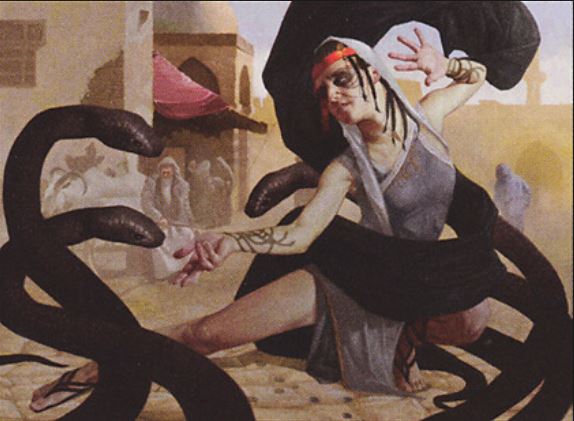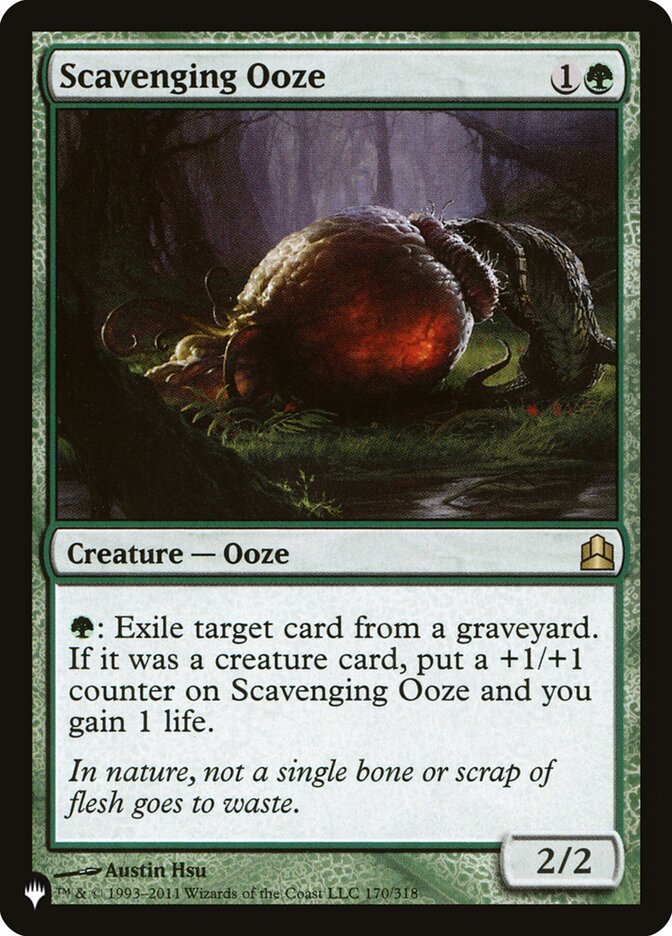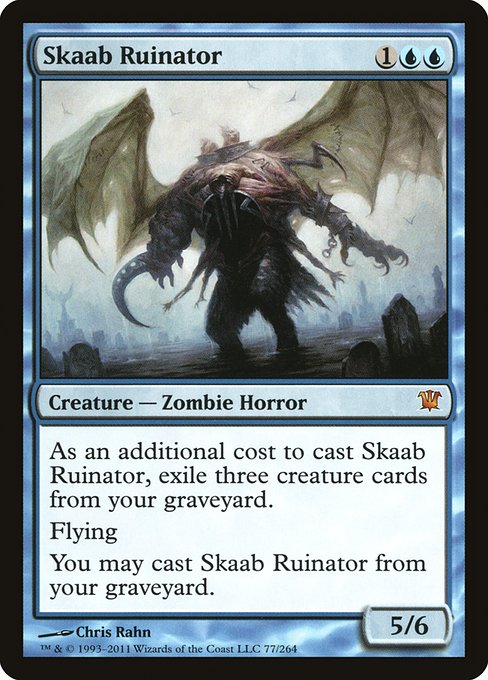Are you a Quiet Speculation member?
If not, now is a perfect time to join up! Our powerful tools, breaking-news analysis, and exclusive Discord channel will make sure you stay up to date and ahead of the curve.
After publishing my article last week, another Quiet Speculation writer shared his rationale for an alternate point of view. Specifically, David was skeptical of Modern Horizons so early into its release cycle and he provided a bullish case for Ophiomancer.
We exchanged ideas in the Insider Discord in a healthy discussion on these two points. On the one hand, I am standing by my support for Modern Horizons speculation. I still think this set will be relatively under-opened (even if the print run is high) and the playable cards in the set—especially foils—will continue to climb.
On the other hand, my call to sell Ophiomancer was clearly premature. This isn’t the first error I’ve made in MTG finance and it won’t be my last. Too often the vocal members of the MTG Finance community boast their hits and eschew discussion on their misses. Time to change that. I want to embrace them because I can learn from these mistakes. This week I am going to share some of my largest blunders along with the lessons I learned from them, in the hope readers can avoid the same pitfalls I encountered throughout my eight years of MTG finance.
Lesson 1: If You’re Early, You’re Wrong
I suggested selling Ophiomancer at its $13 high last week, but now copies can’t be found for less than $18. Apparently, the human shaman interacts well with Yawgmoth, Thran Physician in Commander. This is an interaction I overlooked in my face-value assessment, and clearly there are enough people interested in playing (or speculating on) this interaction.
I could argue that Ophiomancer’s parabolic move won’t be sustainable. Often times we see a new interaction spark a buyout, only to watch the spiked card’s price rapidly trend back down again. Once speculators get their fill, they compete in price and undercut each other, until buyers are willing to step in and a new price is established.
But the bottom line is I was too early on the sell call. Instead of selling last week at $13, one could conceivably sell their copies this week at $17. Selling may be the right call now, but selling too early would have meant missing 30% more upside. In this case, the early call to sell was the wrong call.
Another recent example where my timing was premature was when I acquired foil Thran Temporal Gateways. I still believe in this card’s long-term prospects, but buying up Card Kingdom’s copies at $3.49-$3.99 was not ideal given their price is now $2.99 ($2.49 for EX). Fortunately, I was able to ship some copies to ABU Games for decent trade credit. But the bottom line is I could have purchased fewer copies and instead waited for the price to come in.
I only hope my recent Modern Horizons pick-ups don’t follow a similar trajectory!
Lesson 2: The Sealed Product Trap
Years ago, I discovered the stellar returns sealed product yielded. I decided to buy in deeply, acquiring boxes from sets like Time Spiral, Planar Chaos, New Phyrexia, Coldsnap, Unhinged, and Innistrad. These purchases paid out nicely and the wait time for profit wasn’t as long as I anticipated, a nice bonus.
With that I decided to double down—I purchased around a dozen booster boxes of Return to Ravnica and Magic Origins. There seemed to be robust hypotheses behind both sets: the former contained Modern staples such as Shock Lands, Abrupt Decay, and Supreme Verdict. The latter was an under-opened set that contained the flip-Planeswalkers.
After waiting a couple years, I realized these products were not going to provide me any appreciable yield. Despite a reasonable buy-in of around $80-$85 per box, I wasn’t seeing any opportunity to sell for profit. When taking fees and shipping into account, a booster box really has to appreciate at least 25% to become a worthwhile target. I ended up cashing out of all sealed product for a loss.
Despite the pain of such an unsuccessful purchase, I learned three valuable lessons about sealed product:
- Starting around the time of Return to Ravnica, Standard sets are printed into oblivion. In fact, you can still purchase booster boxes of Return to Ravnica and Magic Origins for under MSRP even now. Prior to that, buying any boxes with playable eternal cards would have made you significant profit. Those days are over.

- The opportunity cost of sealed product is very high. While sitting on these booster boxes, I had a couple thousand dollars tied up, rotting on my shelf. Other than their nice display, there is no benefit to sitting on sealed product—you can’t play with the cards and you can’t open the packs. They also take up a great deal of space. Instead of booster boxes, I’d rather use that capital to acquire cards that have upward potential—at least I can use them while waiting for that return!
- The exceptions aren’t worth pursuing. Yes, Khans of Tarkir boxes sell for $180 on Card Kingdom’s site. Yes, Japanese War of the Spark booster boxes have major potential due to the alt-art Planeswalkers. Yes, Kaladesh booster boxes retail for $200 because they contain Masterpiece These are all sound exceptions. But you know what? I still don’t want to deal with it. Packaging up the boxes, bringing them to the post office, paying the exorbitant shipping cost—to me it just isn’t worth it. You could have made $100 on a Kaladesh booster box because they contain Masterpieces, but you also could have made $100 by simply buying the Masterpieces themselves!
Lesson 3: Buylists Aren’t Always Forward-Looking
When I listen to CNBC podcasts, I sometimes hear about how certain industrial data is “forward-looking” and other data is “backward-looking”. These terms are usually used to describe jobs data, inflation numbers, manufacturing data, etc. While there’s no direct parallel in Magic, the concept should not be overlooked completely.
I discovered this truth the hard way back in 2013. I remember it well—the promotional Scavenging Oozes started hitting the market, and demand was high. Prior to its reprinting in Magic 2014, the only copies of the popular Modern card were from the original Commander set, and they sold for top dollar. At one point these sold for $35 and buylisted for nearly $30!
Once I learned of the reprint, I knew its price would bottom quickly and rebound—I wanted to make this a major position in my portfolio. Copies started to hit eBay and the price began its precipitous drop. As copies started approaching $8, I became very interested. At that moment, Star City Games had an $8 buy price on the card. To me, this was license to go all in. I figured if Star City Games was buying at $8, then I should feel confident in doing so too.
After all, such an aggressive buy price meant that Star City Games believed the card would rise in price from there, right?
Wrong.
After buying a few dozen copies, my buylist safety net was pulled out from under me. Suddenly Star City Games was paying $6 a copy. Then even lower. Even more copies came to eBay at lower price points, and I simply couldn’t purchase them all. The price fell further over the course of a couple months, and that’s when I realized I wasn’t going to profit from this endeavor. Rather than throw the copies in my box of shame, I decided to liquidate and put that money to work elsewhere. I’m glad I made this decision because Scavenging Ooze’s price never recovered. Multiple reprints later, the promo version of Scavenging Ooze still sells for a $4.
The breakdown was in trusting a vendor’s buylist as a forward-looking indicator. This is a fallacy—major vendors don’t set their buylist price based on anticipated price movement. They set their buylist price based on their current supply and sale history. In other words, their buylist prices are based on what has happened up until that point (backward-looking), not what they expect to happen in the future. Keep that in mind next time you speculate on a card based on a vendor’s buy price. If market price is on par with a buylist price, it’s possible the buylist price drops instead of the market price rising.
Wrapping It Up
As I embarked on this article, I quickly realized just how many mistakes I’ve made in MTG finance over the years. It’s easy to remember all the correct calls and well-timed buys and sells. But in reality, I’m far from perfect and have my fair share of poorly executed investments. I highlighted three specific cases here because there are valuable lessons to take away from each. But in reality, the list is quite lengthy. I never even mentioned my failed speculation on Skaab Ruinator!
The good news with Magic speculation, though, is that you don’t have to be perfect to make money. In fact, you only need to be right more than you’re wrong to turn a profit. All things equal, a 50.1% success rate is still successful in my book (although the value of your time may be a factor). We all make mistakes, but hopefully, we can learn from each other’s to get our success rate up a little more. The three lessons I shared in this article will hopefully give you that additional edge needed to make your Magic hobby that much more affordable.
…
Sigbits
- In keeping with the “failed spec” theme of the week, let’s examine Card Kingdom’s buylist prices on some of the cards I’ve unsuccessfully speculated on over the years. First and foremost, of course, there is Scavenging Ooze; Card Kingdom pays $2.75 on the promo version I once bought dozens of for around $8 a copy. Like I said before, I’m glad I decided to cut losses on this one when I did!
- At one time I did believe Skaab Ruinator would be a hit in Standard or Modern—that never materialized. Card Kingdom doesn’t even have non-foils specifically listed on their buylist, meaning they’d consider it a bulk mythic rare at this point. At least they have another Innistrad card on their buylist that I once speculated on: Ghoultree. They’re paying a whopping $0.33 for the green creature!
- Card Kingdom’s buy price on foil Thran Temporal Gateway: $0.90. I am still sitting on a few copies that I couldn’t unload profitably now that ABU Games dropped their buy price. In this case, I am going to wait patiently and see if the price gains traction over the next few months.
- BONUS: At one point, I was sitting on nearly 100 Shock Lands. This was before the most recent return to the world of Ravnica, about a year after Return to Ravnica was released. I was so confident these would return to $20+ and I put my money where my mind was. But the returns didn’t pan out on the timeline I had projected, and ultimately I sold all my shocks to a buylist in GP Vegas a few years back. Nowadays those buy prices are about the same as they were when I sold. For example Breeding Pool and Watery Grave from Return to Ravnica buylist to Card Kingdom for $8.25. I’m happy I sold when I did because that opportunity cost was steep and the five-year return on that large investment would have been tiny.










These are mostly cards that dropped and never recovered, maybe another article could focus more on selling too early? (I am sure you have had a few of those).